The train service that is mimicking London's Tube
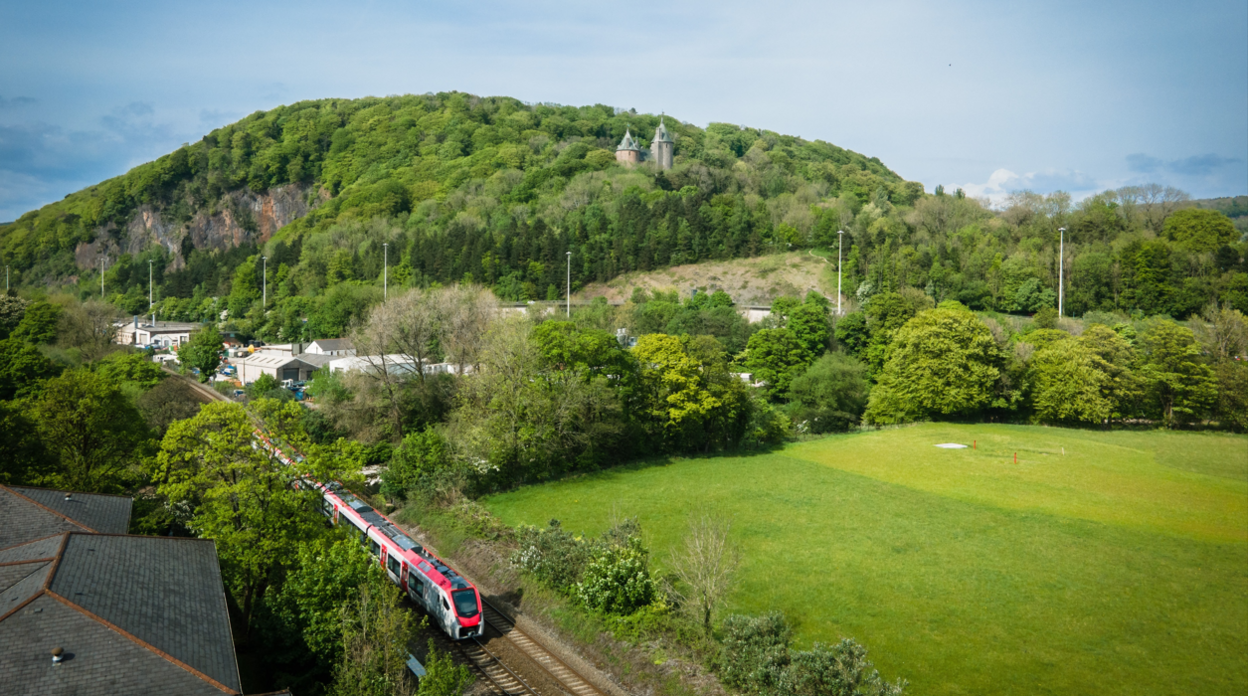
There will be 20 trains an hour past Castell Coch between Cardiff and Pontypridd within two years
- Published
A colour-coded map, tap in tap out payment, destination boards telling you how long to the next train and switching lines to get to where you want to go quicker.
This sounds like life as a Tube traveller but soon this will not be just reserved for the hustle and bustle of London commuters, it will be for passengers in south Wales too.
The first step towards the Welsh valleys getting its own underground - but overground - rail network starts on Sunday as the service undergoes its biggest timetable overhaul for 30 years.
Rail bosses have advised passengers to check before travel because times and routes may change from Sunday.

The new Transport for Wales valley lines map showing the new routes
But they have also warned travellers will still face engineering work for the next 18 months or so as Transport for Wales (TfW) completes its £1bn valleys line facelift.
What's the new valleys line timetable?
This weekend's timetable change, external affects all valley line routes and includes the introduction of new and additional services, amended routes and new termini for most trains.
Increase from six to eight trains per hour between Cardiff and Pontypridd
Increase from four to six trains per hour between Cardiff and Caerphilly
Increase from one to two trains per hour between Cardiff and Rhymney
More evening services between Cardiff and Treherbert, Aberdare and Merthyr Tydfil
A Sunday service on the Cardiff City line
A new service between Cardiff Bay and Pontypridd
Some valley line routes in and out of Cardiff have changed so when service frequency increases in 18 months, the major station interchanges in the Welsh capital will be able to cope with the extra capacity.
What is the South Wales Metro and when will it be done?
- Published31 May 2024
Why a 49-mile train journey took me seven hours
- Published21 October 2023
Why Wales' quietest station got busier
- Published11 December 2018
So that means passengers travelling from some stations may want to change trains at Pontypridd or Radyr to reach their destination quicker, just like they might have to do on a major city subway.
"It's annoying because I always like to get some work done on the train and like to draw, so to get up and get out in the cold and the rain isn't ideal," said mum Krystal Georgiou from Aberdare, Rhondda Cynon Taf.
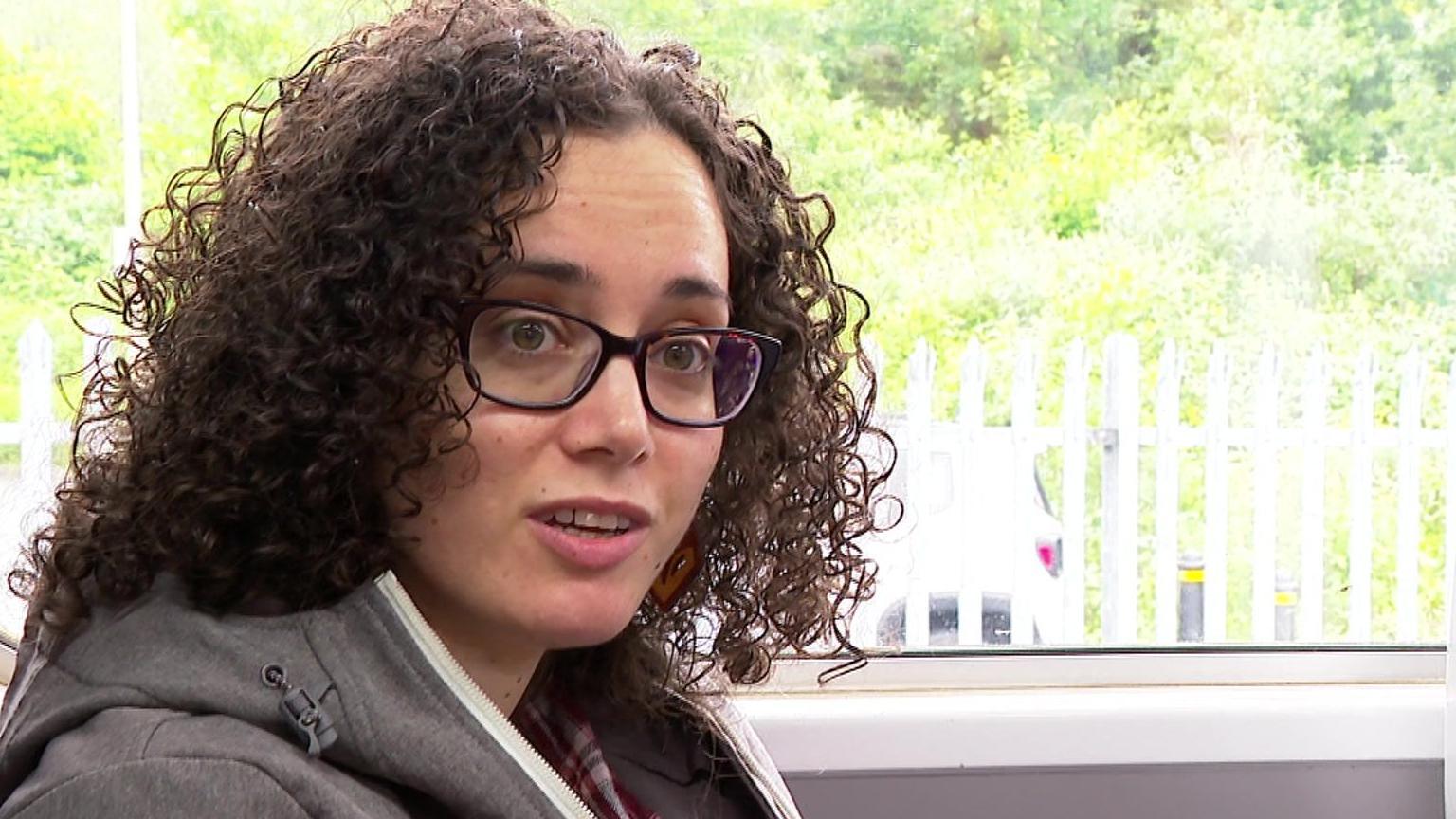
Krystal Georgiou used to be a fairly regular rail commuter in south Wales but now mainly works from home
"I've got a three-year-old son and it's hard enough to keep him entertained without having an extra stop where he'd want to run around on the platform."
Passengers like Krystal can remain on the train but the direct service will take longer than hopping off at Pontypridd, where you would stay on the same platform and catch the next arrival a few minutes later.
"If you go to London, Manchester, Newcastle or any metro around the world, you wouldn't expect a direct service to everywhere - you'd expect to change," said Prof Mark Barry, who has been involved with the scheme since it was first suggested in 2011.
"But you need high frequency services and then for it to become part of your routine, changing trains is second nature for people that use big city metros."
What is the South Wales Metro?
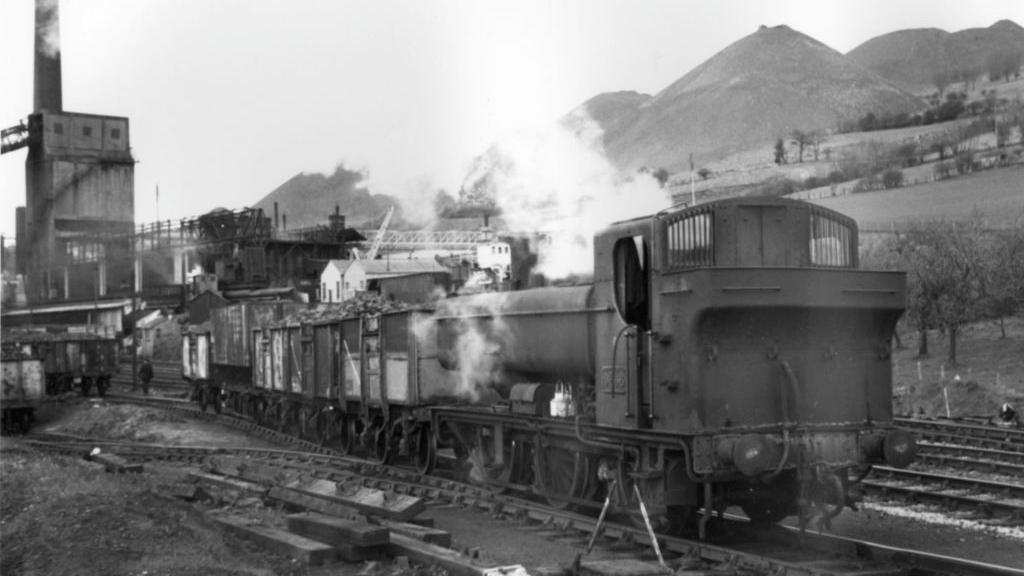
Transporting coal from the mines in the valleys to the docks at Cardiff was behind the birth of the railways in south Wales
All of this weekend's changes are the first tangible step for passengers of the new South Wales Metro, a taxpayer-funded project whose cost has spiralled to more than £1bn.
The idea is passengers can throw away their timetable within two years because by then there will be so many services running every hour on routes in the valleys that you will not need to check train times in advance.
Track electrification work will be finished this year, almost 40 stations renovated and 36 new tram-trains built to run on the 105 mile (170km) network - with those trains already delivered and expected to be in service by the end of this year.
New trains have already been rolled out across some valley lines, while more will be added for when the Eisteddfod festival brings more than 150,000 visitors to Pontypridd in August.
When will South Wales Metro be finished?
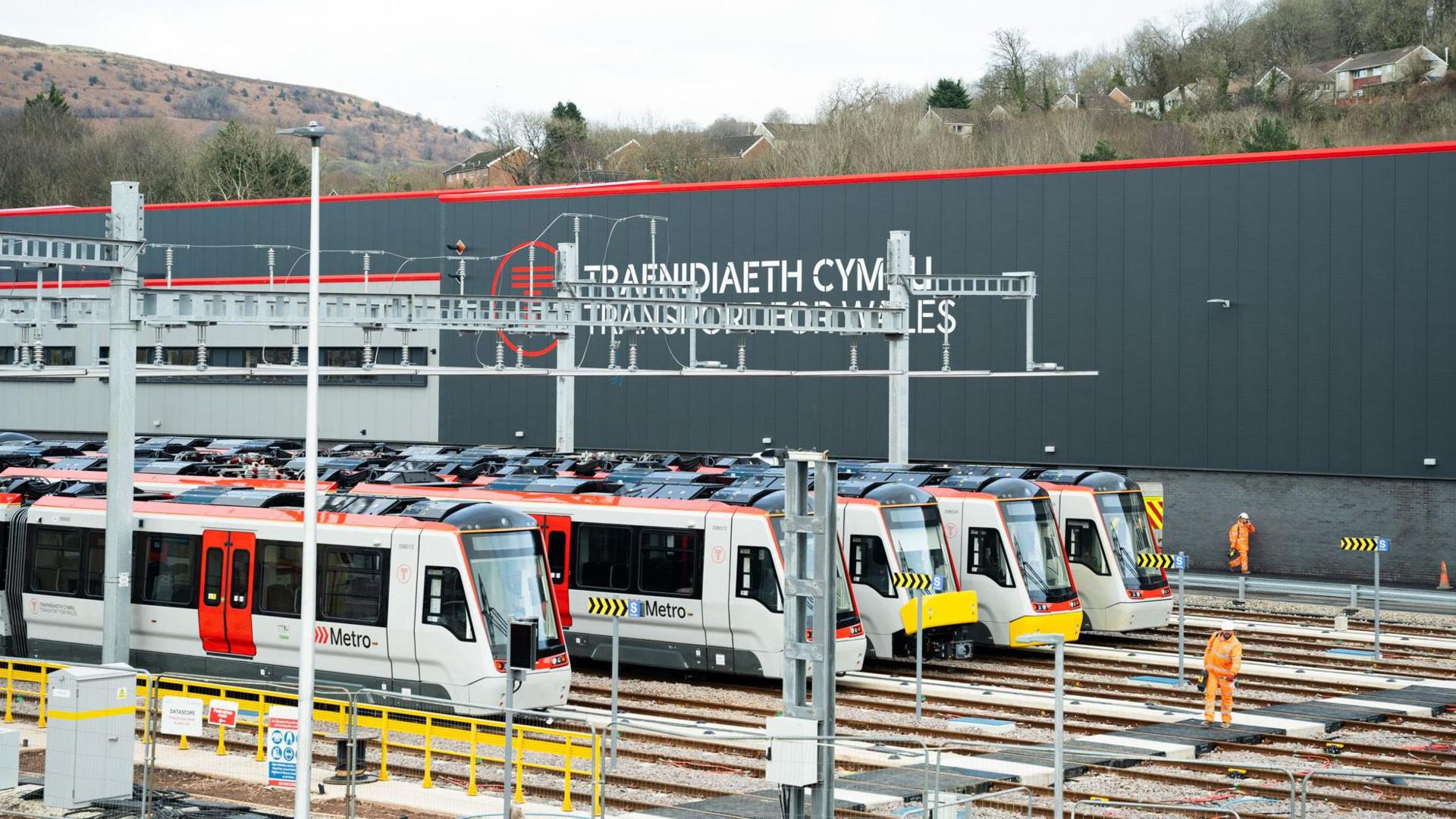
The 36 new tram-trains built by Swiss-company Stadler will run on the south Wales valleys line network from later this year
By the start of 2026, all TfW routes on what used to be known as the Valley Lines will see twice as many trains an hour - and all of those new, larger trains will have step-free boarding.
When all of the work is complete, people living in places like Merthyr, Aberdare and Treherbert will have access to four trains an hour to Cardiff - which means Pontypridd will have, on average, a train every three minutes to the Welsh capital.
"When that kind of service begins is the time people go 'wow, this is a completely different kind of network, a London Underground type service'," added Prof Barry.
But the doubling of service frequency cannot be added to the beefed-up valleys timetable until major signalling and track upgrades at Cardiff's Queen Street interchange can be completed so it can allow almost a train a minute to safely pass through what is already Wales’ second busiest station.
Punctuality on TfW trains is the best for nearly three years, according to latest rail performance figures with two-thirds of services arriving within a minute of the timetable on average.
But Covid affected people's use of public transport and projections of passenger numbers are half of that when the Metro project started.
And after years of delayed, crowded and cancelled trains, engineering works and dreaded rail replacement buses, for passengers it is a case of they will believe it when they see it.
Engineering work will still affect services in the next 18 months or so - like on the Vale of Glamorgan line next month - while the upgrades continue.
But TfW's chief operations operator is confident passenger numbers will return when the work is all done.
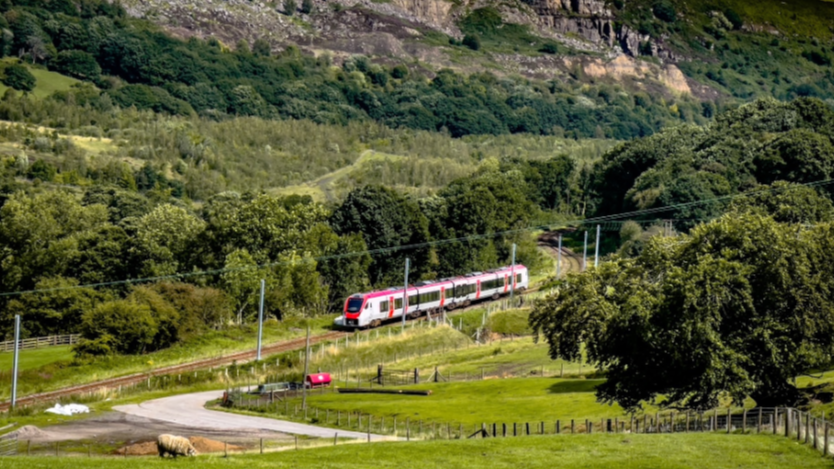
This timetable change affects all valley line routes
"It's a real issue that people have got out of the habit of using the train," said Jan Chaudhry-Van der Velde.
"Having brand new trains that are more reliable and having a frequency of services that is twice what they are now, using a train will become more attractive than siting in rush hour traffic getting into Cardiff.
"It might mean changing train but from end-to-end it'll be quicker and be a bit more like using the London Underground."
Is Cardiff getting a Metro?
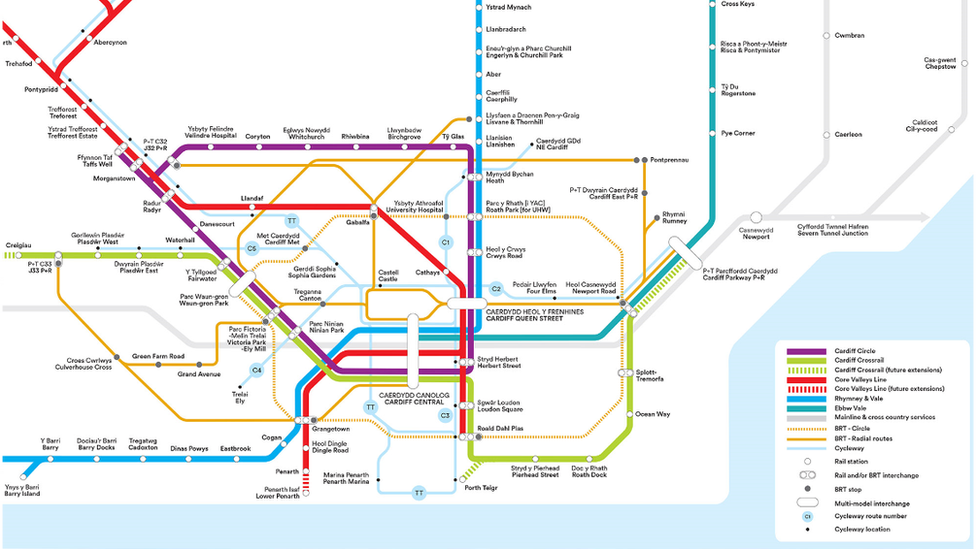
The proposed additional metro lines for Cardiff are still in the early stages
While the new South Wales Metro has been described as transformative for people in the valleys getting to and from Cardiff, one of the criticisms that in the short-term is it will not increase rail transport for much of Wales' biggest city.
With a population of about 360,000, more people live in Cardiff than most of the valley destinations combined - which includes Barry and Bridgend as well as those bigger valley towns.
"The South Wales Metro will be transformational for areas around Cardiff but large parts of the city are not going to see any change in service frequency or capacity," said Prof Barry, who was an TfW advisor on the metro until recently.
"That's a bit of a hole for me. We need to fix the Cardiff issue because then we can say that Cardiff is getting the full metro treatment, it's not quite getting that from the current committed phase of work."
Some areas of the city like Radyr, Llandaff, Cathays and the valleys hub at Cardiff Queen Street will get more trains, but many parts will not in this first metro phase.
"Places like Birchgrove, Fairwater, Ninian Park and Rhiwbina will still only be getting two services an hour and no one waits 30 minutes for a train for a 15 minute journey, added Pro Barry.
"Turn up and go service frequency of four trains per hour minimum are essential for urban transit systems."
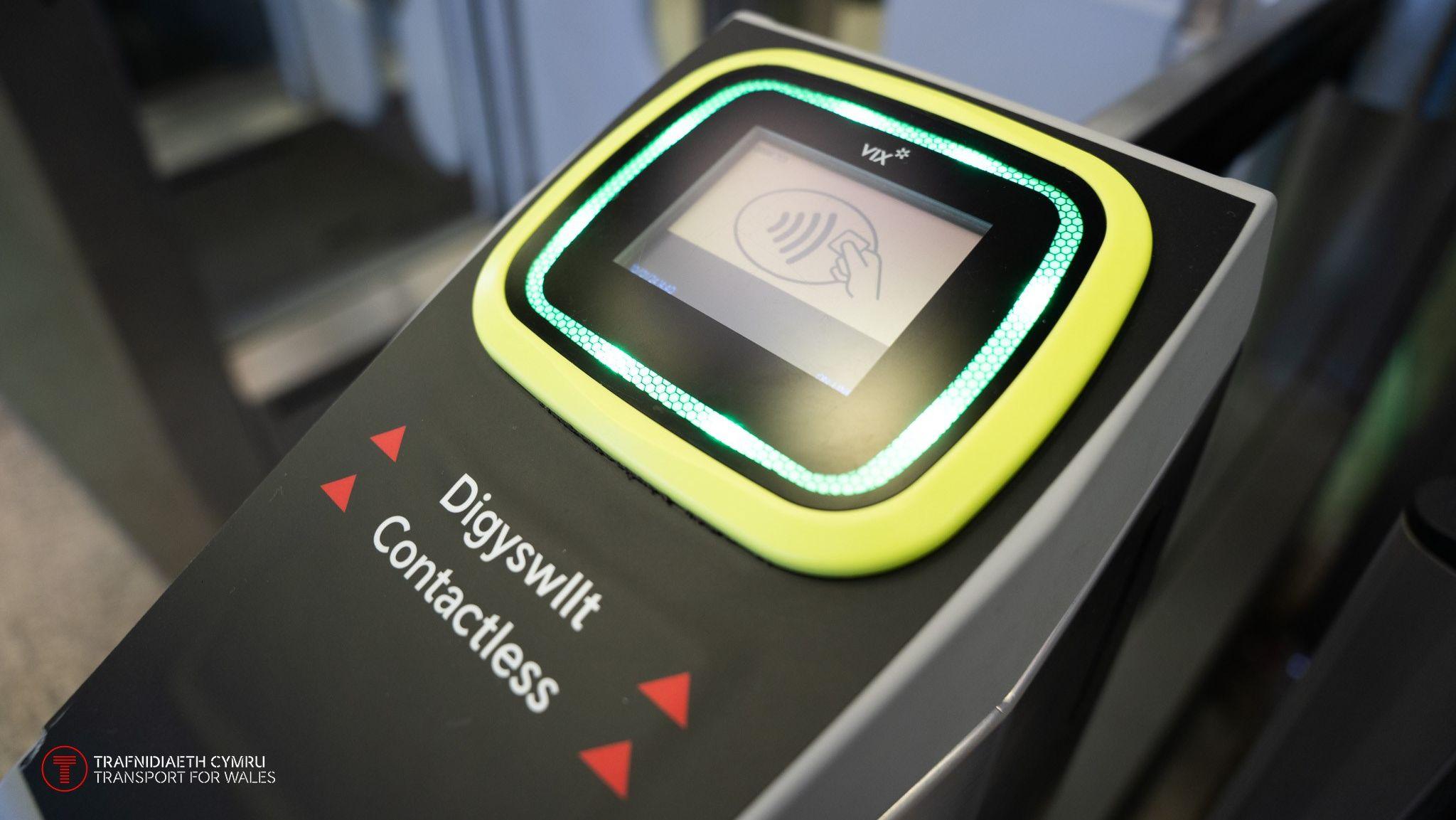
There will be a tap in tap out system similar to the one for the London Underground
What is South Wales Metro's next phase?
Alongside the Metro enhancements on the valleys line, construction is due to start next summer on Cardiff's new £100m on-street tram service which will link the capital's mainline Central train hub with Cardiff Bay initially, including a new station in Butetown.
The ultimate plan is for the Cardiff tram - a 256-people capacity, three-carriage train - to link the city centre with the planned £250m indoor arena, external, which councillors hope can open in the bay in 2026, and a new Cardiff Parkway station on the east of the city.
It is hoped the new tram will be fully built in under five years ready for Cardiff to act as a host city when the UK and Ireland stage football's 2028 European Championship.
More routes and stations are proposed around Cardiff in the next phases but Prof Barry said upgrades to signalling and track west of Central station on the UK Government-owned south Wales mainline is needed to increase capacity before more service improvements can be brought in around Cardiff.